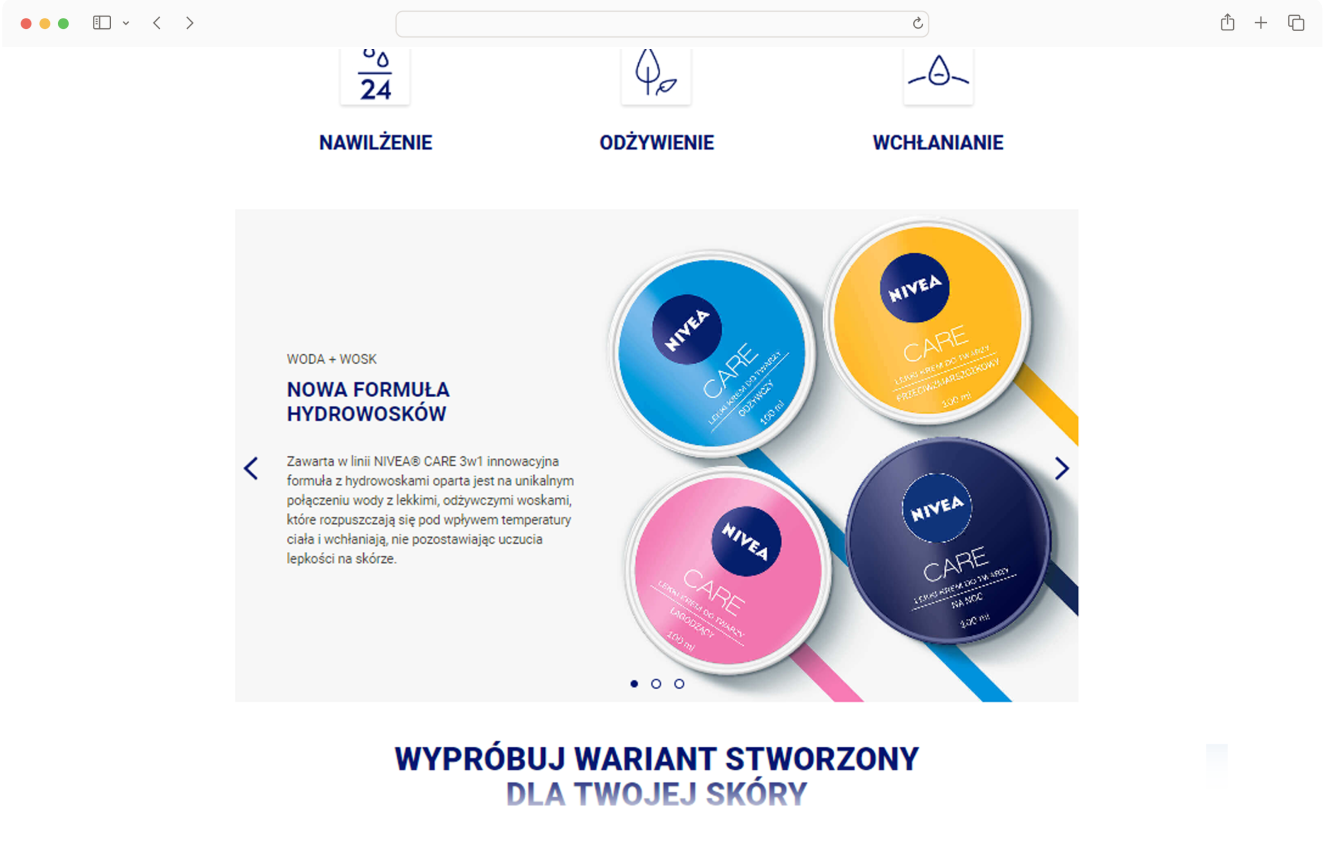How to design effective and creative content in product cards?
Product content is an excellent source of sales that provides an opportunity to better understand the assortment and influence consumer perception. Neuromarketing studies show that a product card with the right descriptions increases conversions by up to 30%. When creating it, it is important to pay attention to several key elements, making your product card readable and optimized for sales.
The essence of data selection
Creating content for product cards involves appropriate information selection. Descriptions should include key features and parameters that will interest consumers and show them the significant advantages of the product range. Too much information will overwhelm the audience, it will be difficult for them to find the data they need, which will consequently lower their purchasing decision. A well-designed product sheet is not a work of chance or intuition, nor an abbreviation of a technical description or product catalog.
It is worth considering what distinguishes a particular product and what features (e.g. performance, energy savings or design) convince potential consumers. Descriptions should be created around a number of functions and uses, showing how to use the item and introducing the consumer to the world they will be in when they buy the item. This will build a strong awareness of the product in the audience, helping them make a better decision. It is therefore necessary to use the language of sales to skillfully reach the motivations of buyers.
Creativity and context help you choose
Monotonous descriptions bore the viewer and make him quickly forget both the product and the brand. The key, therefore, is to creatively present the features and functions of the product, creating content that affects emotions – maintaining an impression of the rationality of the decision being made. So storytelling, which through a concise story will highlight the advantages of the assortment, make the viewer curious and distinguish the brand from other companies, will work great.
It is also important that the descriptions present the products in a specific context – informing where and how to use the item in everyday life. This will help customers learn about specific uses and imagine specific situations in which they will use the product. This, in turn, is already quite a step toward making a positive purchasing decision.

Attractive form of product presentation
Content is not only words, but also images, which should interact appropriately. Graphics should depict products in a specific situation, creating a visualization of how the item will look in the consumer’s home, for example. It’s also a helpful tool for demonstrating the construction and specific features of the item being sold. At the same time, it should be remembered that what is described in the text should be reflected in the graphics or photo, so as to evoke the same associations and complete the vision constructed in words – otherwise the consumer will experience contradictory messages, and this is a short dogra to abandon the decision to buy a given product.
Skillful communication interacts with various cognitive aspects while increasing the chances of making a specific purchase decision. Our eyetracking studies have repeatedly proven that consumers undergo multiple revisions of graphics, eventually returning to them moments before making a purchase decision. In addition, images enriched with realistic context (food, environment) resulted in greater engagement on the page and increased recall of the information presented.
Call to action for the consumer
Properly designed content not only conveys valuable information, but also sells and encourages the consumer to take action. The construction of the cards allows you to compare several products with each other based on the description of their features and applications, learn about the different variants of the assortment or opinions of other users, which helps you make a specific choice. In turn, the use of such a section as FAQs dispels many purchasing doubts before they have time to form in the buyer’s mind, effectively increasing sales and speeding up decisions.
So it’s worth creating descriptions that evoke certain reactions. Leaving the consumer without suggestions or prompts for the next step will result in much less engagement, and consequently brand sales will not increase.
Summary
Content in product cards plays an important role in building brand image and sales. Consistent communication on one’s own online site and with e-retailers is a guarantee of trust and increased consumer decision-making. With the listed elements, you will better manage your materials and create a message that informs, presents and at the same time sells.
Read also

- Tomek Chabowski

- Dominik Stachowiak

- Tomek Chabowski
Check out our Linkedin
© 2023 | Privacy Policy